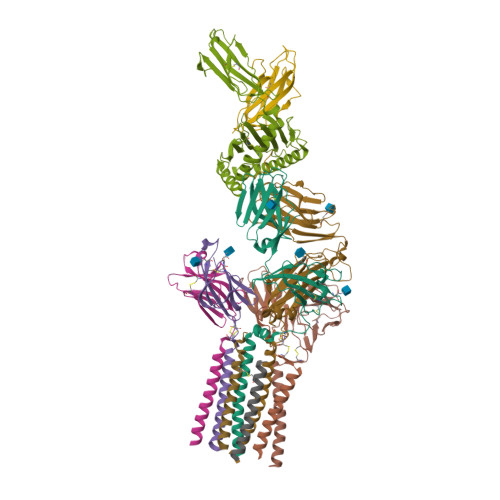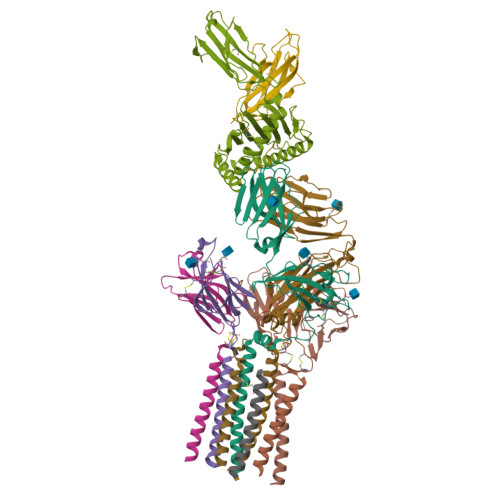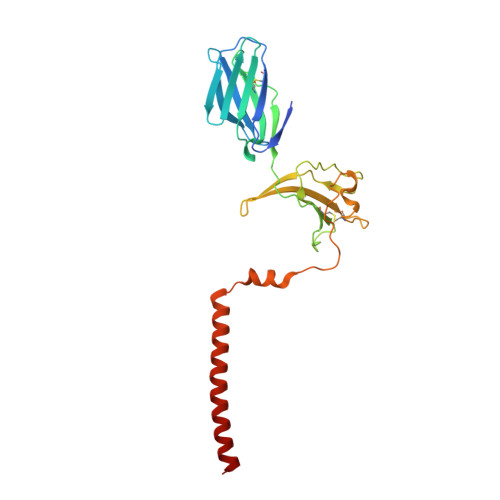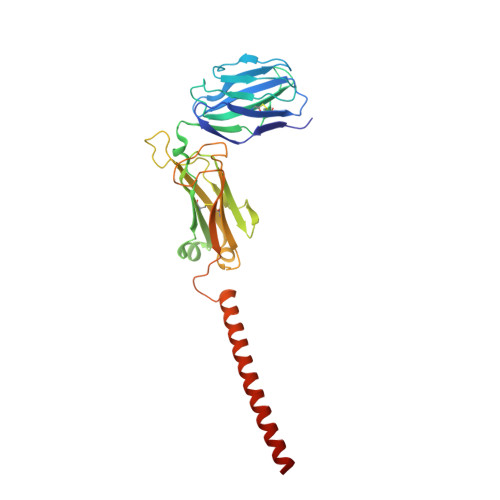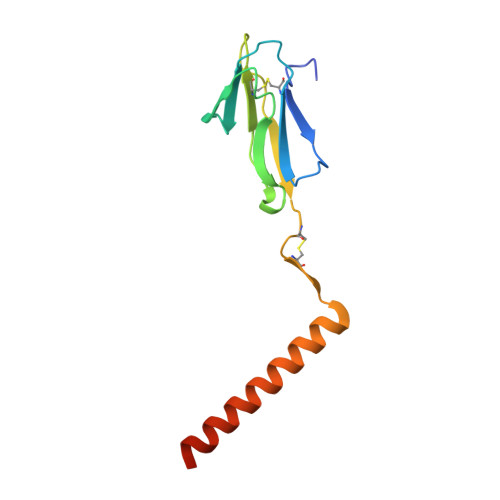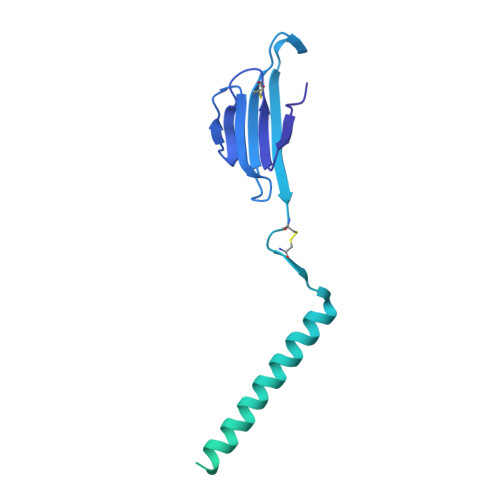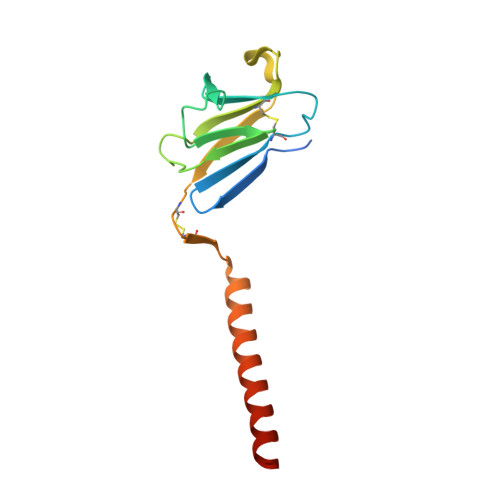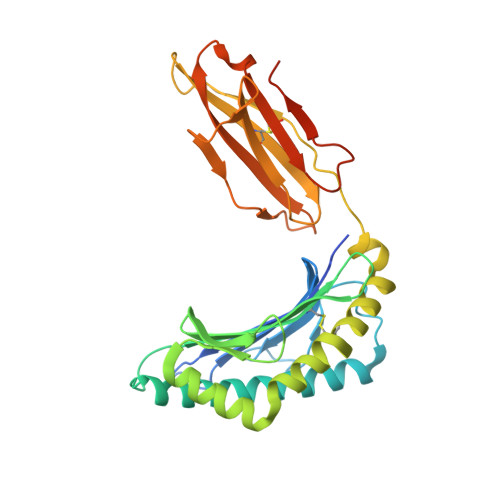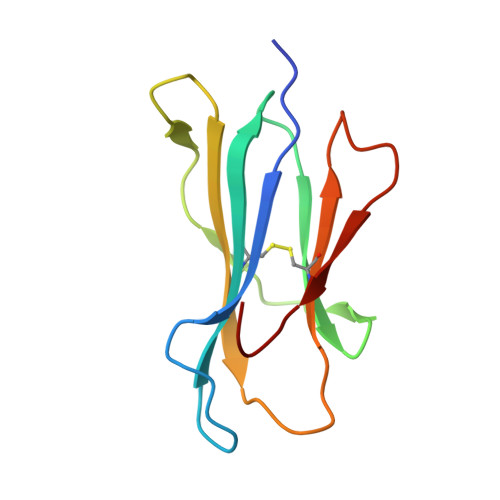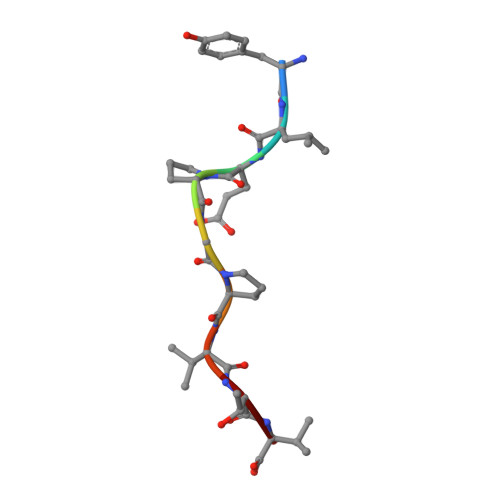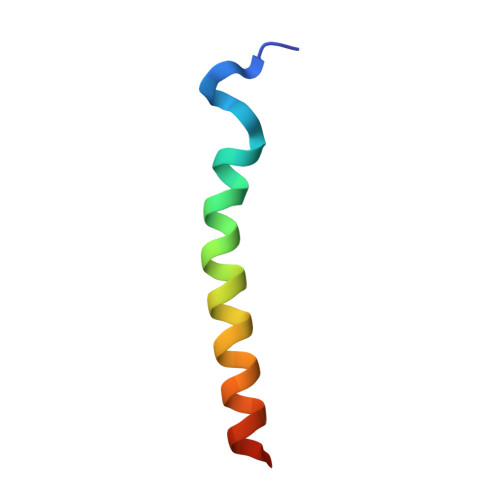Structure of a fully assembled tumor-specific T cell receptor ligated by pMHC.
Susac, L., Vuong, M.T., Thomas, C., von Bulow, S., O'Brien-Ball, C., Santos, A.M., Fernandes, R.A., Hummer, G., Tampe, R., Davis, S.J.(2022) Cell 185: 3201-3213.e19
- PubMed: 35985289
- DOI: https://doi.org/10.1016/j.cell.2022.07.010
- Primary Citation of Related Structures:
7PHR - PubMed Abstract:
The T cell receptor (TCR) expressed by T lymphocytes initiates protective immune responses to pathogens and tumors. To explore the structural basis of how TCR signaling is initiated when the receptor binds to peptide-loaded major histocompatibility complex (pMHC) molecules, we used cryogenic electron microscopy to determine the structure of a tumor-reactive TCRαβ/CD3δγε 2 ζ 2 complex bound to a melanoma-specific human class I pMHC at 3.08 Å resolution. The antigen-bound complex comprises 11 subunits stabilized by multivalent interactions across three structural layers, with clustered membrane-proximal cystines stabilizing the CD3-εδ and CD3-εγ heterodimers. Extra density sandwiched between transmembrane helices reveals the involvement of sterol lipids in TCR assembly. The geometry of the pMHC/TCR complex suggests that efficient TCR scanning of pMHC requires accurate pre-positioning of T cell and antigen-presenting cell membranes. Comparisons of the ligand-bound and unliganded receptors, along with molecular dynamics simulations, indicate that TCRs can be triggered in the absence of spontaneous structural rearrangements.
Organizational Affiliation:
Institute of Biochemistry, Biocenter, Goethe University Frankfurt, Max-von-Laue-Str. 9, 60438 Frankfurt am Main, Germany.








